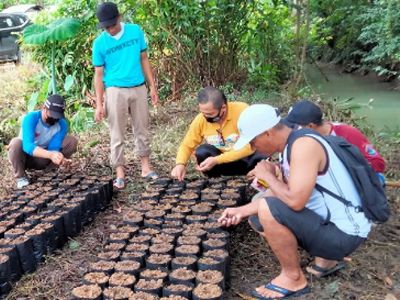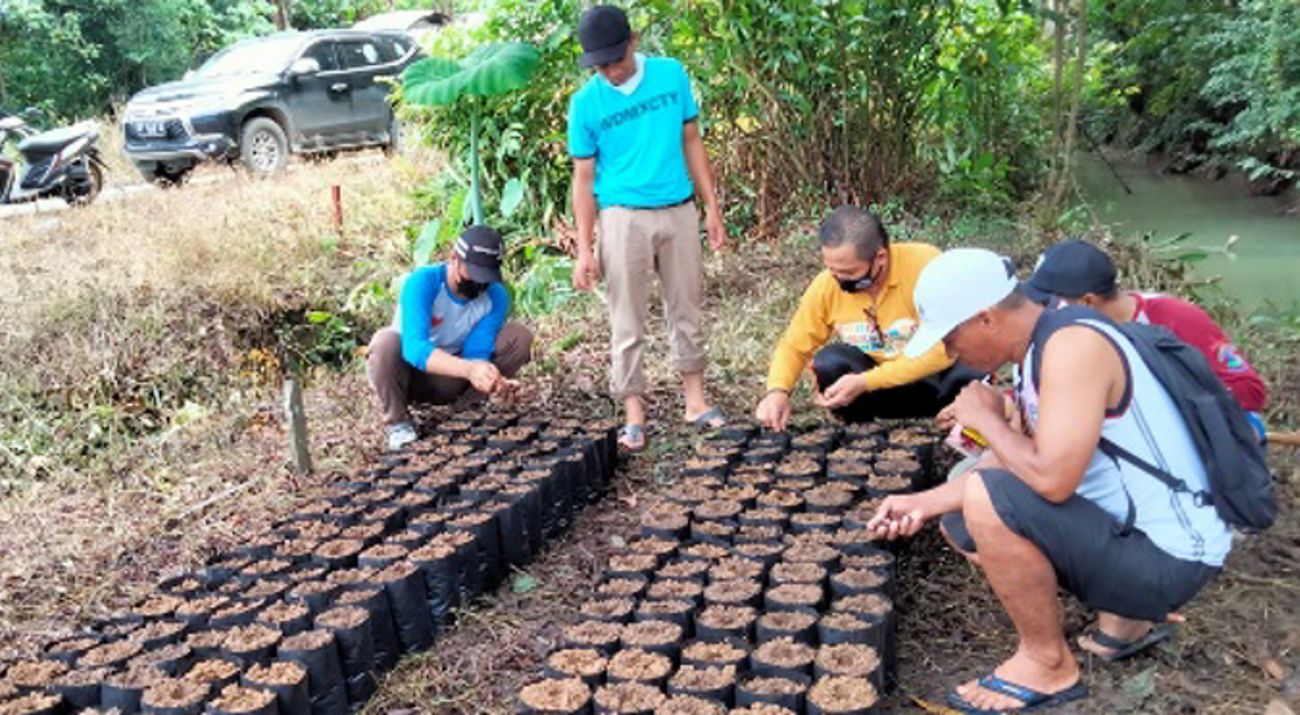The Porang plant (Amorphophallus muelleri) was suddenly trending during the COVID-19 pandemic. With global demands continuing to increase, the perennial tuber is now widely cultivated in many areas of Indonesia. The Agriculture Ministry stated that in 2020, Indonesia exported 19.8 thousand tonnes of Porang with a total value of Rp880 billion (US$57.2 million) to 16 destination countries—most prominently China, Thailand, and Vietnam.
The humble relative to the taro plant's road to glory is full of twists and turns. Once, people regarded it as an unwanted pest or weed. The locals called it "snake food" as it was deemed useless. However, sometimes foragers dig out the tuber, often found underneath the teak, sonokeling (Rosewood), or mahogany trees, as they grow wild in the forests. In fact, during Indonesia's pre-independence era, particularly during the Japanese occupation period, Porang was one of the crops planted on a large scale due to the forced cultivation system—to meet the military needs for food and industry.

An instruction from the Ministry of State-Owned Enterprises in 2012 solidified the comeback of Porang cultivation when it listed the plant as a priority crop. The decree appointed state-owned company Perum Perhutani Unit I and II in East Java together with the Forest Management Units (KPH) in Blora, KPH Cepu, KPH Mantingan, and KPH Randublatung as well as residents involved in the Joint Community Forest Management Programme (PHBM) to carry it out. A decade passed, and Porang started to gain back its long-lost fame thanks to changes in eating behaviours as more people are looking for healthier sources of carbohydrates. The starch from Porang can be processed into shirataki rice and noodles that taste no less different than rice. Its higher fibre content and familiar flavour are responsible for the growing popularity of starch from Porang.
In East Kalimantan, as many as nine districts/municipalities grow Porang. The farmers from all nine regions have formed the East Kalimantan Porang Farmers Association (P3KT).
Data from 2021 showed that there were 143 Porang farmers in the province, cultivating a total area of 92.72 hectares. In 2022, P3KT targets to expand Porang farms to 450 hectares, a 500 per cent increase from the previous year.
Porang's inherent potential becomes the basis for consideration in developing alternative sources of income for the SIGAP Village Programme in the Oil Palm Plantation Sector in Berau. For the past five years, the Nusantara Nature Conservation Foundation (YKAN), together with the Foundation for Ummah Resources Development and Improvement (YP2SU), have implemented a community mentoring approach through the SIGAP (Inspiring Community Actions for Change) framework in villages with oil palm plantations and other potential natural resources. The main focus of this facilitation was to create a participatory village development plan, land use plan, and the development of Village-Owned Enterprises.
Throughout June 2021, YP2SU visited three Oil Palm SIGAP villages in the Biatan subdistrict, Berau, to identify the area's potential for Porang cultivation. The villages were Biatan Lempake, Biatan Bapinang, and Karangan.
The visit discovered that all three villages intersect with High Conservation Value Areas (ANKT). The 2020 Berau administration Decree No. 287 on Indicative Map for Protection of ANKT and High Carbon Reserve in Plantation Allotment Areas stipulated that it covers approximately 83,000 hectares. The adjacent regions in the ANKT area appear to have the land contour and structure dominated by mangroves and karst. This finding further emphasised that the three villages are important ecosystems for reducing greenhouse gas emissions. Mangroves are essential for emission absorption, and the karst landscapes are valuable water and carbon reserve storage.
Based on their ANKT and ecosystem considerations, the planting of Porang was initiated in the three villages to maintain land use while providing alternative income outside oil palm plantations. In Biatan Lempake village, the Association of Farmer Groups (Gapoktan) manage the Porang farms, while in Biatan Bapinang, the village administration runs it. In Karangan, Porang is planted in waqf land.


